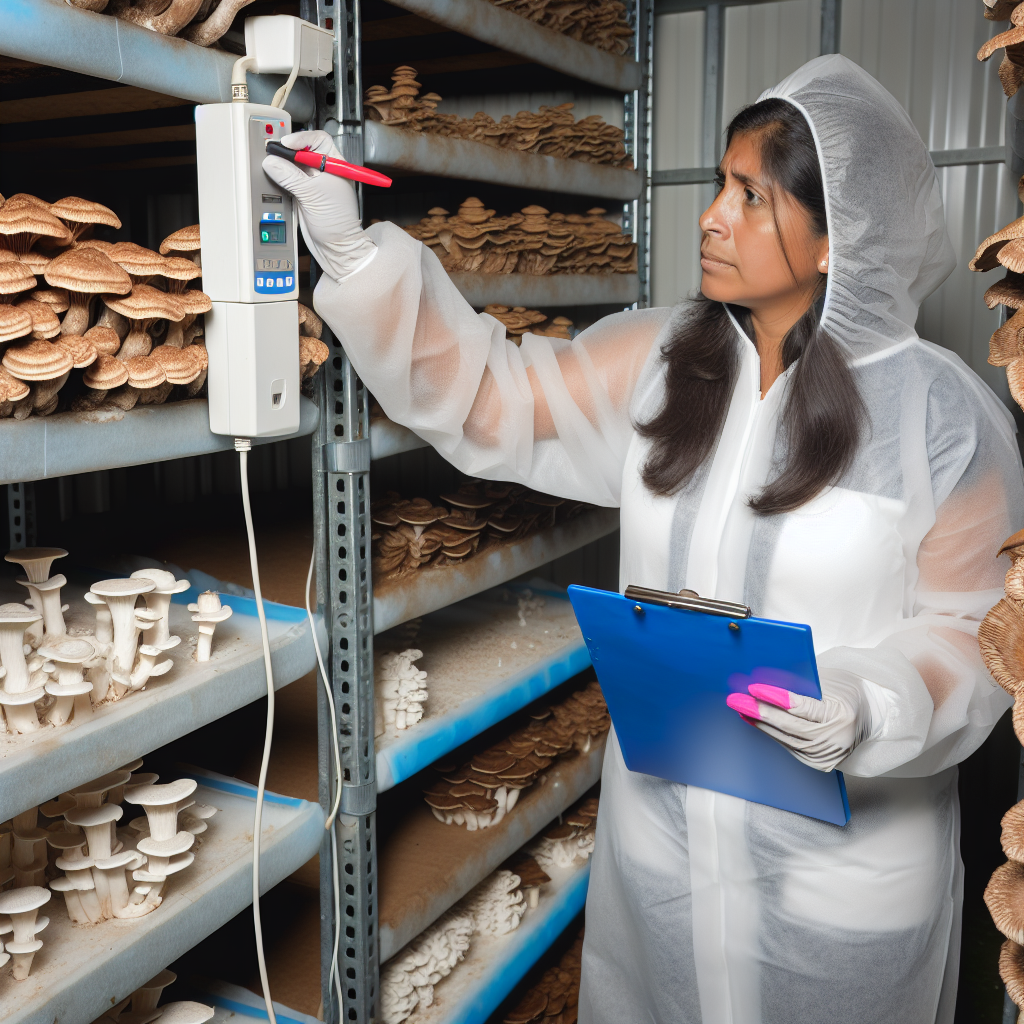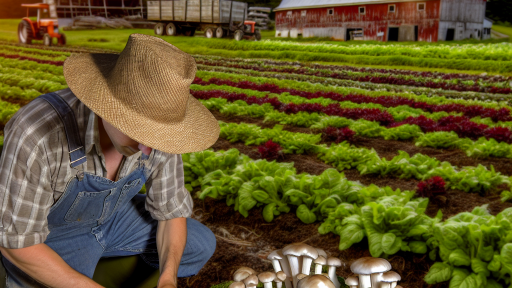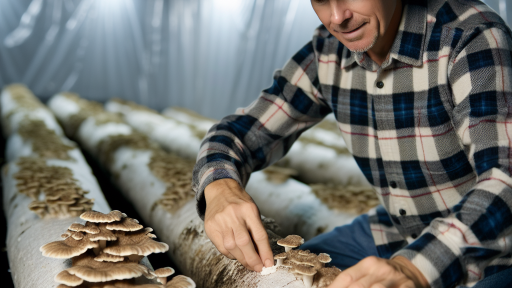Introduction to Climate Control in Mushroom Cultivation
Mushroom cultivation thrives in carefully controlled environments.
Climate control plays a crucial role in optimizing growth conditions.
Understanding the ideal temperature, humidity, and ventilation is essential.
You can enhance yields significantly by managing these factors effectively.
Importance of Temperature Control
Temperature affects mycelium growth and fruiting body development.
Most mushroom species prefer specific temperature ranges.
For example, oyster mushrooms thrive between 55°F and 75°F.
Monitoring temperature helps prevent diseases and promotes robust growth.
Maintaining Humidity Levels
The right humidity level influences mushroom quality and yield.
Generally, mushrooms require 80% to 95% humidity during growth phases.
Low humidity can lead to drying and stunted growth.
Many growers use humidifiers to maintain consistent moisture levels.
Ensuring Proper Ventilation
Air circulation is vital to prevent the buildup of harmful gases.
Good ventilation helps regulate temperature and humidity as well.
It encourages healthy fungal growth and reduces the risk of contamination.
Transform Your Agribusiness
Unlock your farm's potential with expert advice tailored to your needs. Get actionable steps that drive real results.
Get StartedUsing fans strategically can improve airflow throughout the growing space.
Combining Techniques for Optimal Growth
Integrating temperature, humidity, and ventilation strategies is crucial.
This approach maximizes the efficiency of the cultivation process.
Regular monitoring and adjustment ensure consistent results.
By employing advanced technology, growers can fine-tune these conditions.
Understanding the Ideal Climate Conditions for Mushrooms
Temperature Requirements
Mushrooms thrive in a specific temperature range.
Most edible mushrooms prefer temperatures between 55°F and 70°F.
For example, button mushrooms favor cooler temperatures around 60°F.
On the other hand, shiitake mushrooms flourish at slightly warmer conditions.
To optimize growth, monitor temperature fluctuations actively.
Humidity Levels
Humidity plays a crucial role in mushroom cultivation.
Generally, mushrooms require a humidity level of 80% to 90%.
If humidity levels drop, mushrooms may dry out and become unviable.
Implement humidifiers or misting systems to maintain moisture.
Regularly check humidity with a reliable hygrometer.
Light Conditions
Light is essential but should be provided in moderation.
Certain mushrooms, like oyster mushrooms, benefit from bright, indirect light.
Other varieties thrive in complete darkness, especially during fruiting.
Use fluorescent lighting for even distribution if necessary.
Be mindful of the light cycle; a normal 12/12 hour cycle works well.
Air Quality and Ventilation
Good air exchange is vital for healthy mushroom growth.
Stale air can hinder development and cause contamination.
Ensure proper ventilation in the growing area to facilitate airflow.
Using fans can help keep the environment stable.
Showcase Your Farming Business
Publish your professional farming services profile on our blog for a one-time fee of $200 and reach a dedicated audience of farmers and agribusiness owners.
Publish Your ProfileAvoid strong drafts as they can disrupt humidity levels.
pH Levels for Substrates
The pH level of substrates also affects mushroom quality.
Most mushrooms prefer a slightly acidic to neutral pH, around 6.0 to 7.0.
Regularly test substrate pH using simple kits available commercially.
If needed, adjust the pH by adding lime or sulfur in moderation.
Monitoring and Adjusting Conditions
Consistently monitor climate conditions during cultivation.
Use thermometer and hygrometer combinations for accurate readings.
Adapt the environment based on mushroom stages for optimal growth.
Flexibility is essential for achieving consistent results.
The Role of Temperature Management in Mushroom Growth
Understanding Temperature Requirements
Mushrooms thrive in specific temperature ranges.
Each species has unique temperature preferences.
For example, oyster mushrooms prefer warmer conditions.
In contrast, shiitake mushrooms require cooler temperatures.
Effects of Temperature on Mycelium Development
Temperature directly influences mycelium growth rates.
Optimal temperatures promote healthy mycelium expansion.
Conversely, extreme temperatures can stall development.
Mycelium also requires consistent temperature for colonization.
Temperature and Fruiting Bodies
Temperature changes trigger mushroom fruiting.
Lowering the temperature often stimulates fruit formation.
This shift mimics seasonal changes in nature.
As a result, growers should monitor temperatures closely.
Implementing Temperature Control Strategies
Growers can use climate control systems effectively.
Heating and cooling systems maintain stable temperatures.
Additionally, insulating growing environments is crucial.
Covering growing containers minimizes temperature fluctuations.
Regular monitoring ensures conditions remain optimal.
Addressing Temperature Extremes
Extreme temperatures can harm mushroom crops.
Heat stress leads to poor quality and yield loss.
Using fans can help dissipate excess heat.
Moreover, humidity controls can assist in this regard.
Importance of Effective Temperature Management
Temperature management is vital for successful mushroom cultivation.
Understanding each species’ needs leads to better outcomes.
Consistent practices pay off with increased yields.
Find Out More: Container Gardening For Urban Farming Success
Humidity Control Techniques for Optimal Mushroom Cultivation
Importance of Humidity in Mushroom Growth
Humidity plays a vital role in mushroom cultivation.
It directly influences the growth and yield of mushrooms.
Furthermore, different mushroom species require varied humidity levels.
Monitoring Humidity Levels
Regular monitoring of humidity is essential for successful cultivation.
Use hygrometers to measure the humidity accurately.
Consider automatic monitoring systems for constant tracking.
Showcase Your Farming Business
Publish your professional farming services profile on our blog for a one-time fee of $200 and reach a dedicated audience of farmers and agribusiness owners.
Publish Your ProfileMethods for Humidity Control
There are various methods to control humidity in mushroom farms.
Each method has its own advantages and limitations.
Using Misting Systems
Misting systems effectively increase humidity levels.
They work by spraying fine droplets of water into the environment.
Ensure the system operates at regular intervals for best results.
Employing Humidifiers
Humidifiers can add moisture to the air efficiently.
Choose models designed specifically for agricultural use.
Regular maintenance ensures optimal performance of humidifiers.
Natural Methods
Natural methods can be employed to maintain humidity.
For instance, placing bowls of water in cultivation areas works well.
Additionally, wet straw or other organic materials can help improve humidity.
Benefits of Proper Humidity Control
Maintaining optimal humidity levels promotes healthy mushroom growth.
It also enhances the flavor and texture of the produce.
Moreover, proper humidity control minimizes the risk of contamination.
Challenges in Humidity Management
Humidity control can be challenging in some environments.
Temperature fluctuations may affect humidity levels.
Therefore, regular adjustments to control devices are necessary.
Explore Further: Understanding Seed Germination For Farmers
Ventilation Strategies to Enhance Air Quality in Mushroom Farms
Importance of Air Quality
Air quality significantly influences mushroom growth and health.
Healthy air circulation prevents contamination and promotes even temperature.
Thus, maintaining optimal air quality is essential for successful cultivation.
Basic Ventilation Techniques
Proper ventilation involves both natural and mechanical systems.
Natural ventilation utilizes windows and vents to circulate air.
Mechanical systems rely on fans and blowers to ensure airflow.
Both systems should work together for effective air exchange.
Natural Ventilation
Natural ventilation is cost-effective and energy-efficient.
Designing buildings with airflow in mind enhances this strategy.
Include operable windows that can open during cooler weather.
Utilize roof vents to allow hot air to escape easily.
Mechanical Ventilation
Mechanical ventilation can control air quality regardless of external conditions.
Install exhaust fans to remove excess moisture and CO2.
Intake fans can bring in fresh air, supporting the growth process.
Mechanical systems also allow for precise control over temperature and humidity.
Monitoring and Adjusting Air Quality
Consistently monitoring air quality improves growing conditions.
Utilize sensors to track temperature, humidity, and CO2 levels.
Adjust ventilation systems based on real-time data for optimal results.
Regularly check for blockages in vents to maintain airflow.
Creating an Airflow Plan
Develop an airflow plan specific to your mushroom farm layout.
Consider the placement of growing beds and equipment.
Ensure that air reaches all areas evenly to prevent hot spots.
Showcase Your Farming Business
Publish your professional farming services profile on our blog for a one-time fee of $200 and reach a dedicated audience of farmers and agribusiness owners.
Publish Your ProfileRegularly review and modify the plan as needed.
Benefits of Enhanced Air Quality
Improved air quality results in healthier mushrooms and increased yield.
It reduces the risk of mold and pathogen growth.
Enhanced ventilation can also lead to shorter cultivation cycles.
Investing in air quality pays off in better productivity.
Gain More Insights: Common Mushroom Farming Challenges and Solutions

Utilizing Technology for Automated Climate Control Systems
Importance of Climate Control in Mushroom Cultivation
Climate control is essential for successful mushroom cultivation.
The right temperature and humidity levels enhance mushroom growth.
Without proper climate management, yields can suffer significantly.
Technological Advances in Climate Control
Modern climate control systems utilize advanced technology.
These systems can automatically adjust temperature and humidity.
Furthermore, they monitor environmental conditions continuously.
Components of Automated Climate Control Systems
- Temperature sensors ensure optimal warmth for mushrooms.
- Humidity controllers maintain necessary moisture levels.
- Ventilation fans provide fresh air circulation.
Benefits of Automated Systems
Automated systems improve efficiency in mushroom farming.
They reduce labor costs by minimizing manual monitoring.
Moreover, these systems enhance consistency in climate conditions.
Implementation Considerations
Farmers must evaluate their specific needs before implementation.
Investing in technology can be an upfront cost.
However, the long-term savings and benefits often outweigh initial expenses.
Delve into the Subject: Tips For Successful Vegetable Seed Saving
The Importance of Monitoring and Data Analysis for Climate Management
Understanding Climate Variability
Climate variability significantly impacts mushroom cultivation.
Temperature, humidity, and light exposure influence growth rates.
Consistent data collection fulfills the need for effective management.
Utilizing Technology for Effective Monitoring
Modern technology plays a crucial role in monitoring climate conditions.
Temperature sensors provide accurate readings of environmental changes.
Humidity sensors help maintain optimal moisture levels.
Data logging systems enable continuous tracking for informed decision-making.
Implementing Data Analysis Strategies
Data analysis transforms raw climate data into actionable insights.
Utilizing software tools can reveal patterns and trends in cultivation.
Analyzing historical data helps predict future climatic conditions.
This foresight is valuable for planning mushroom crops effectively.
Benefits of Real-Time Monitoring
Real-time monitoring enhances the ability to respond promptly.
Adjustments in climate conditions can be made quickly.
This timely action helps prevent potential crop losses.
It also ensures optimal growing conditions are consistently maintained.
Creating a Data-Driven Cultivation Plan
A well-structured plan incorporates monitoring practices into daily routines.
Regularly reviewing data supports adaptive farm management strategies.
A data-driven approach increases overall productivity and profitability.
Informed decisions lead to healthier mushroom yields.
Sustainable Practices in Climate Control for Mushroom Production
Understanding Temperature Management
Temperature management is crucial for successful mushroom cultivation.
Mushrooms thrive in specific temperature ranges depending on the variety.
Showcase Your Farming Business
Publish your professional farming services profile on our blog for a one-time fee of $200 and reach a dedicated audience of farmers and agribusiness owners.
Publish Your ProfileFor example, button mushrooms prefer cooler temperatures between 55°F and 60°F.
On the other hand, shiitake mushrooms enjoy warmer conditions, around 60°F to 75°F.
Proper insulation can help maintain these ideal temperatures.
Employing Humidity Control Techniques
Humidity levels significantly impact mushroom growth and yield.
High humidity promotes healthy fruiting body development.
Generally, mushroom growing environments require 80% to 90% humidity.
Using misting systems can efficiently maintain necessary moisture levels.
Additionally, moisture-retaining substrates contribute to optimal humidity.
Ventilation for Fresh Air Supply
Good ventilation is essential for mushrooms to flourish.
Air exchange helps control carbon dioxide levels in the growing environment.
Excessive carbon dioxide can hinder mushroom development.
Implementing exhaust fans can enhance air circulation within the growing area.
Moreover, regular monitoring enables growers to adjust ventilation effectively.
Utilizing Renewable Energy Sources
Renewable energy can support sustainable mushroom farming.
Solar panels provide reliable power for temperature control systems.
Wind turbines can further supplement energy needs for large-scale operations.
These approaches can reduce overall energy costs and carbon footprints.
Consequently, they contribute to a more sustainable production process.
Innovative Climate Control Technologies
Investing in advanced climate-control systems can optimize mushroom production.
Smart technology monitors temperature, humidity, and air quality continuously.
Such systems enable precise control, maximizing yield without excess resources.
Automation also saves labor costs and reduces human error.
Furthermore, these systems can adapt to fluctuating environmental conditions.
Implementing Sustainable Waste Management
Waste management plays a vital role in sustainable mushroom cultivation.
Utilizing by-products from mushroom production can reduce overall waste.
Spent substrates can serve as organic fertilizers for other crops.
This approach not only benefits the environment but also promotes resource conservation.
Additionally, composting waste contributes to improving soil health.
Additional Resources
So you want to switch to Horticulture? : r/Horticulture
Expanding Specialty Mushroom Production on Urban and Rural …




